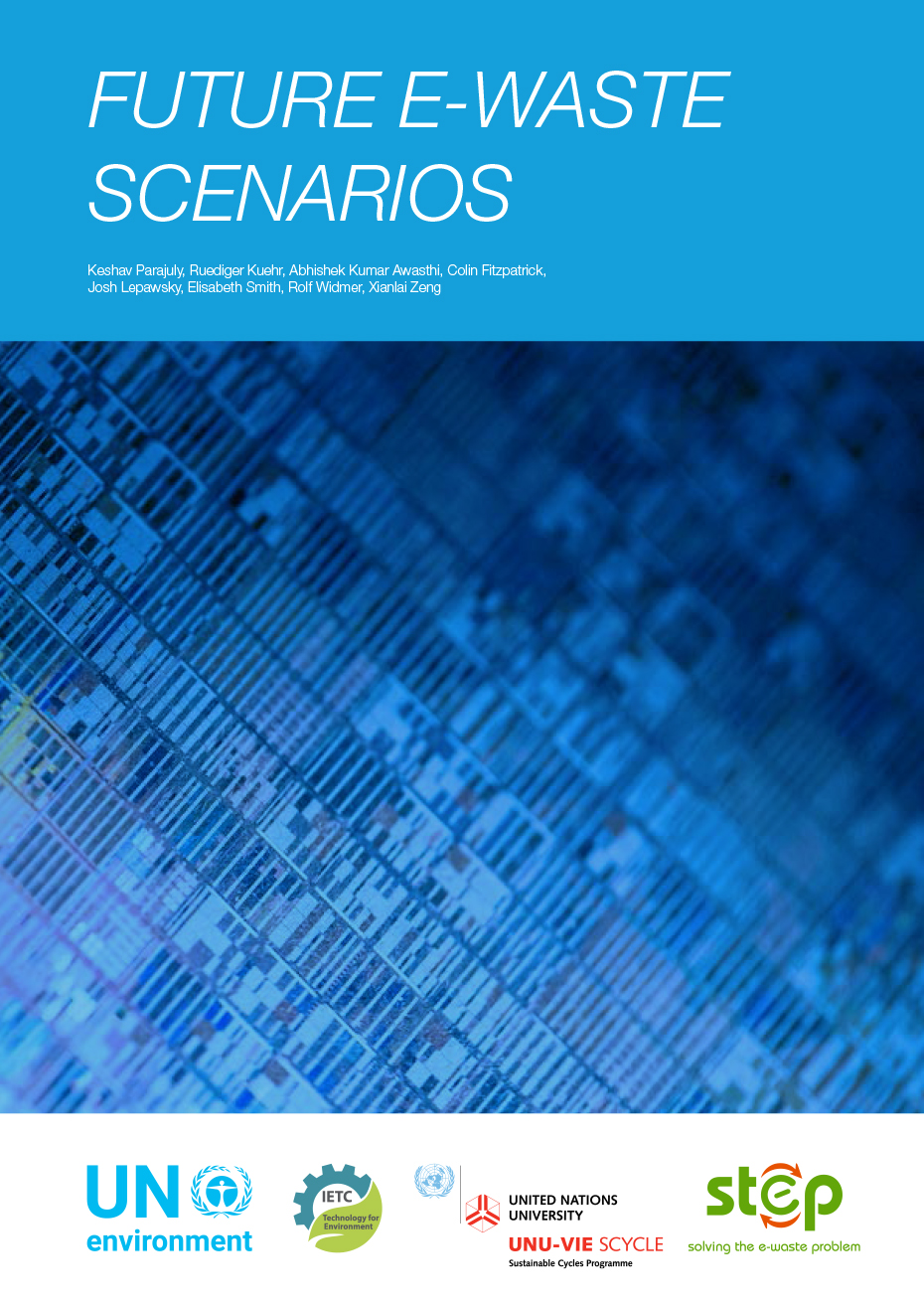 E-waste will double by 2050. Business-as-usual is not an option to cope with it: UN Initiative. E-waste is referred to as the world’s fastest growing solid waste stream. Since 2000, e-waste has grown from 20 million to 50 million tonnes per year. A new report from the United Nations University-hosted Solving the E-waste Problem (StEP) Initiative, published together with UN Environment, highlights future e-waste scenarios. Under a baseline scenario, the amount of e-waste will more than double by 2050, to reach approximately 111 million tonnes per year.
E-waste will double by 2050. Business-as-usual is not an option to cope with it: UN Initiative. E-waste is referred to as the world’s fastest growing solid waste stream. Since 2000, e-waste has grown from 20 million to 50 million tonnes per year. A new report from the United Nations University-hosted Solving the E-waste Problem (StEP) Initiative, published together with UN Environment, highlights future e-waste scenarios. Under a baseline scenario, the amount of e-waste will more than double by 2050, to reach approximately 111 million tonnes per year.
But the quantities alone do not tell the whole story. It is really about how industries, policies, and consumers react to the situation. While there is an opportunity to create sustainable production and consumption systems for electronics, this cannot be achieved by continuing the way we do business. In order to meet the growing demand, while also addressing the unexpected nature of technological evolution, a drastic change is needed in the electronics sector.
New technologies are advancing development of materials and alloys that have improved energy efficiency and portability of electronic appliances. However, recycling of these materials has not been easy. In many cases, despite the available technology, there is no economic incentive for recycling materials from e-waste. And although several policies and regulations have been put in place to cover e-waste, the situation has not improved as expected. Moreover, collection rates of e-waste are still lagging at around 20% on average globally despite attempts to substantially increase them. Hence, most of the e-waste generated is not properly treated.
We need the businesses in the electronics sector to step up and take charge of the responsibility to build a more circular economy in this sector. Depending on their response, the future of e-waste can be imagined in three scenarios:
The business-as-usual ‘linear growth’ scenario — a steady increase of electronics innovation, production, and consumption —may bring more affordable products in the short term, but it will not be free from long-term costs including environmental footprints, toxicity, and mountains of short-lived, single-use and disposable electronic products. Advancement of the production side alone, without significant improvements in collection and recycling technologies, will not close the production and consumption cycles.
In a ‘reactive approach’ scenario — in which the industry will be forced to comply with stricter regulatory obligations — the e-waste situation might improve locally but its impact will be outsourced to countries with weaker environmental regulations. There will be an increased chance for informal activities and the compliance costs will most likely be transferred to consumers.
The best alternative will be a ‘proactive path’ to be led by the industry players towards more sustainable production and consumption. Manufacturers can take the initiative with innovative business models prioritizing lifetime extension and reuse of electronic products. This shift to more circular business practices will reduce the negative impacts of e-waste, despite the inevitable growth in the use of electronics, and also help to prevent e-waste generation.
It is not easy to predict technological evolution because even large manufacturers have degrees of uncertainty about progress and processes in 10, 20 or 30 years. But the use of electronics and therefore the generation of e-waste will almost certainly grow in the next few decades. It is especially true for rapidly growing economies that are yet to be flooded with the myriad of e-products that come with economic prosperity. This means there will be more challenges, as well as opportunities, for all players in the global e-waste arena: producers, users, e-waste collectors, recyclers, and policy makers. Regardless of which direction the future evolves, ensuring a sustainable production and consumption system for e-products will require significant efforts from all stakeholders.
This paper is published by the StEP Initiative, UNU ViE-SCYCLE, and UNEP IETC.
THE STEP INITIATIVE The Solving the E-waste Problem (StEP) Initiative is a network of e-waste experts and a multi-stakeholder platform for designing strategies that address all dimensions of electronics in an increasingly digitized world. The independent Initiative applies an integrated and science-rooted approach to create salient solutions to global e-waste challenges throughout the entire lifecycle of electronics.
UNU ViE-SCYCLE The Sustainable Cycles (SCYCLE) Programme is hosted by the United Nations University Vice Rectorate (UNU ViE) in Europe in Bonn, Germany. SCYCLE’s mission is to promote sustainable societies, and focuses its activities on the development of sustainable production, consumption, and disposal patterns for electrical and electronic equipment (EEE), as well as for other ubiquitous goods. SCYCLE leads the global e-waste discussion and advances sustainable e-waste management strategies based on life-cycle thinking.
UNEP IETC The International Environmental Technology Centre (IETC) is a branch of the United Nations Environment Programme (UNEP), located in Osaka, Japan, and works with the collection and dissemination of information on environmentally sound technologies with a focus on waste management.
Download the Report (pdf): https://collections.unu.edu/

